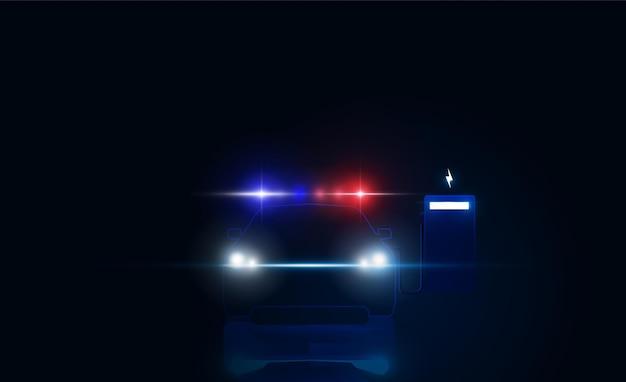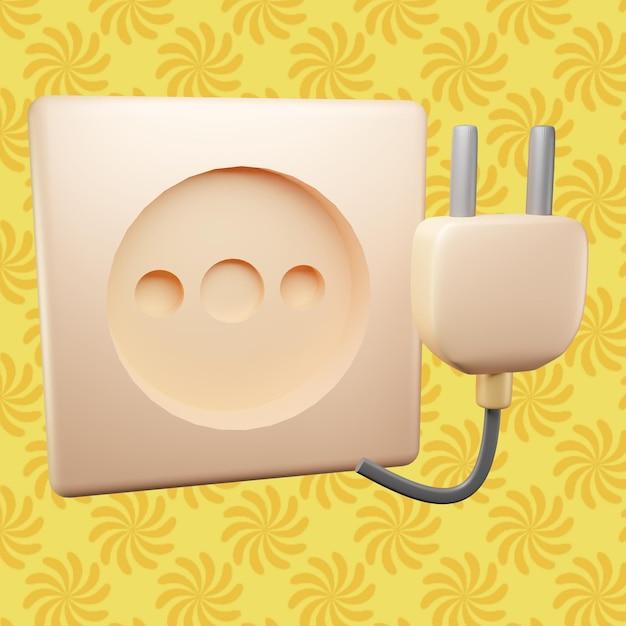You’re ready for your next adventure in your RV, but there’s a problem – the lights aren’t working when you plug it in. Frustrating, right? Don’t worry, you’re not alone. Many RV owners have faced this issue, and in this comprehensive guide, we’ll dive into the possible solutions and troubleshoot the problem.
Before we begin troubleshooting, let’s address a few common questions that RV owners often have. Where is your power converter located within your RV? Does plugging in your RV charge the battery? These are important questions to understand as they can give you valuable insights into the root cause of your lights not working.
In this guide, we’ll explore various scenarios and potential problems that could be causing your lights to malfunction when your RV is plugged in. From understanding the role of power converters and batteries to troubleshooting electrical issues and ensuring your RV is well-maintained, we’ll cover it all. So let’s get started and shed some light on this perplexing problem!
RV Lights Not Cooperating When Plugged In: Shedding Light on the Issue
So, you’ve parked your trusty RV at the campsite, ready to kick back and relax, only to find that when you plug it in, your lights are having a bit of a blackout. Don’t worry; you’re not alone in this flickering fiasco. Many RV owners have faced the very same problem, and today, we’re here to help you understand why your RV lights might be giving you a hard time. Let’s shed some light on this illuminating issue!
The Case of the Dimmed Dreams
No Power? The Circuit Breaker Might Be the Culprit!
Imagine this: you plug in your RV, eagerly expecting a shower of light, but instead, you’re left in the dark. What could be causing this electrifying letdown? One possible explanation lies within your trusty circuit breaker. This little hero is designed to protect your electrical system from overload by shutting off the power supply if things get a little too heated.
To investigate this, head over to your RV’s electrical panel box, often found in the basement or bedroom area. Look out for any breakers that have tripped; they will be in the “off” position or slightly shifted from the others. Simply reset the breaker by flipping it back into position, and you might just be basking in radiant light soon enough!
Let There Be Light, But Not Too Much!
Guess what? There’s a sneaky piece of technology onboard your RV called a voltage regulator, whose purpose is to control the amount of voltage flowing to your delicate light bulbs. But sometimes, things can go awry, and this component may play tricks on your RV’s lighting system.
To fix this, locate the voltage regulator, which can usually be found near your RV’s power converter. Gently tap on it a few times, as if coaxing it back to its senses. With a little luck, this mini intervention might just restore the perfect balance of voltage and banish those light-bulb-blues!
The Li’l Devils Called Fuses
Fuse-ged It or Not? That Is the Question!
Ah, fuses, the tiny devils responsible for safeguarding our electrical systems. Although they’re designed to protect us, they can sometimes be the root of our problems (sound familiar?). So, it wouldn’t hurt to take a peek at the fuse panel and give them a once-over.
Take the time to inspect each fuse, making sure they’re intact and not burnt out. In case you come across one that’s seen better days, replace it with a new fuse to restore harmony and electrifying vibes within your RV.
Shed Light on the RV Lighting System
Manual Override: Are You in the Dark About It?
Here’s a secret weapon your RV may be hiding from you: a manual override switch. This sneaky switch can throw you off the light-game without mercy. So, let’s uncover this hidden gem and put it in its rightful place.
Search for the manual override switch, usually lurking in the interior of your RV. Give it a little toggle and watch for sparks of light revealing their long-lost glory. You’ll be surprised by how elusive this switch can be, hiding in plain sight!
Don’t Stay in the Dark Ages
Now that we’ve illuminated some possible causes for your RV lights going kaput, it’s time to take action and bring brilliance back into your travels. Remember to check your circuit breaker, tap the voltage regulator, inspect those fuses, and hunt down the manual override switch. With these tricks up your sleeve, you’ll soon be back to enjoying a well-lit journey in your RV. Safe travels and bright adventures ahead!
RV Lights Not Working When Plugged In: FAQ
Have you ever found yourself scratching your head, wondering why your RV lights won’t work when plugged in? Whether you’re a seasoned RV enthusiast or a newbie hitting the road for the first time, electrical problems can be a real buzzkill on your journey. Fret not! In this FAQ-style subsection, we’ll tackle some common questions and shed light on troubleshooting tips. So, grab your notepad and let’s dive in!
Q: Where Can I Find My Power Converter in an RV
A: The power converter in an RV is like its electrical superhero, transforming 120-volt AC power into 12-volt DC power. It’s often tucked away in a convenient spot, such as under the bed, inside a cabinet, or in a storage compartment. Consult your RV owner’s manual or do a little sleuthing to uncover its secret hiding place.
Q: Does Plugging In an RV Charge the Battery
A: Yes, plugging in your RV not only powers your amenities but also charges the battery. When connected to shore power, the converter works its magic, sending a surge of electrons into your battery, revitalizing it for all your adventures. It’s like giving your RV’s battery a spa day!
Q: How Do You Troubleshoot an RV Electrical Problem
A: Ah, the mystery of the blinking lights! If you’re experiencing electrical woes, start by checking the circuit breaker panel for any tripped breakers. Next, ensure your RV is properly plugged in and receiving power from the campground pedestal. If these steps don’t do the trick, it’s time to call in the pros or consult an electrically inclined friend. Remember, solving electrical mysteries is best left to the experts!
Q: Should You Store Your RV with the Slides In or Out
A: Ah, the age-old question! Storing your RV with the slides in or out largely depends on personal preference and the space available. While keeping the slides in can reduce exposure to the elements, some RVers prefer leaving them out for a roomier storage space. Just make sure to take necessary precautions to protect your RV from water damage and critter invasions. Don’t let those cheeky squirrels throw a party in your cozy home-on-wheels!
Q: Why Are My Trailer Lights Not Working
A: Trailer lights can sometimes be as tricky as catching a greased pig at a state fair. If your trailer lights refuse to shine their illuminating glory, start by ensuring your tow vehicle’s wiring connection is secure. Check for blown fuses and test the lights using a multimeter. Trust us, embracing your inner detective will help solve this electrifying mystery!
Q: Does Driving Charge the RV Battery
A: Buckle up because here comes the truth bomb! While driving does charge your RV battery to some extent, it’s not a full-fledged charging party. The alternator in your tow vehicle adds a bit of juice to your battery during the ride. However, if you want a full charge, plugging into shore power or using a generator is the way to go. It’s like giving your battery a proper date with the charging gods!
Q: What Causes Most RV Fires
A: Picture this: a cozy evening by the campfire, roasting marshmallows, and swapping tales. But wait! RV fires are no laughing matter. The most common causes include electrical issues, propane leaks, overheating appliances, and poor maintenance. So, keep those electrical connections tight and skip the “Let’s see how many s’mores we can cram in the microwave” game, okay?
Q: How Do I Know If My RV Converter Is Working
A: Is your RV’s power converter giving you trust issues? Fear not, dear wanderer. One way to check if it’s working is by verifying the voltage output with a multimeter. A reading around 13.2 to 13.8 volts means your converter is bravely doing its job. Just make sure it’s not sobbing in a corner, longing for retirement.
Q: Do RV Batteries Charge When Plugged Into Shore Power
A: Absolutely! When you plug your RV into shore power, the converter eagerly gets to work, charging your batteries and ensuring they’re ready to power your adventures. It’s like giving your batteries a big ol’ bear hug!
Q: How Do I Reset My RV Inverter
A: Ah, the mystical reset button! To reset your RV inverter, locate the magical button or switch on the inverter itself or in its nearby vicinity. Gently press or flip it, and voila! Your inverter should be back in action, ready to keep your electrical devices humming along. Just don’t forget to thank it for hitting the reset dance floor!
Q: Can I Hook Up My 30 Amp RV to a 50 Amp Service
A: Ah, the age-old dance of amperes! Yes, good sir or madam, you can indeed connect your 30-amp RV to a 50-amp service, thanks to the holy grail of adapters. Just make sure to grab a 30-amp to 50-amp adapter that matches your RV’s plug configuration, and soon, you’ll be happily swimming in your upgraded electrical pool. Just remember, safety first, amigo!
Q: Can I Jump an RV Battery with My Car
A: Picture this: your RV battery is as dead as a doornail, and you’re stranded in the middle of nowhere. Can you jump-start it with your trusty four-wheeled steed? The answer, dear reader, is a resounding “yes!” Connect those jumper cables, give your car engine a little rev, and watch the power flow. Just remember, RV batteries are big and heavy, so handle them with care. Safety is key, always!
Q: Should You Leave Your RV Plugged In All the Time
A: Ah, the ongoing debate of the plugged-in RV! While keeping your RV plugged in all the time can ensure a fully charged battery and ready-to-go amenities, it can also lead to battery overcharging and unnecessary wear and tear. Some RVers prefer to unplug when not in use, giving their electrical systems a well-deserved break. It’s like sending them on a tropical vacation, free from the shackles of constant power!
Q: Will RV Lights Work Without Battery
A: Imagine this, dear reader: a world where RV lights work without a battery. Unfortunately, we don’t live in that far-fetched utopia. RV lights typically rely on the battery to power their shining glory. So, if you find yourself in the dark without a battery, it’s time to show off your resourceful side and whip out those trusty flashlights. Remember, your RV’s battery is the true superhero here!
Q: Should an RV Inverter Be Left On When Plugged In
A: Picture this: your RV inverter silently humming in the corner, pondering its existence. While some RVers safely leave their inverters on when plugged in, others prefer to give them a break to prevent unnecessary power drain and wear. If you’re not in need of AC power, go ahead and flip that switch off. Your inverter will appreciate the relaxation time, just like you appreciate a lazy Sunday afternoon.
Wrap-Up
And there you have it, dear reader—a comprehensive FAQ-style guide to unraveling the mystery of RV lights not working when plugged in. We’ve shed some light on power converters, battery charging, troubleshooting, and more. So, the next time you find yourself in an electrical pickle, remember these wise words of RV wisdom. Now, go forth and embrace your inner electrical sleuth by conquering those RV light conundrums!

